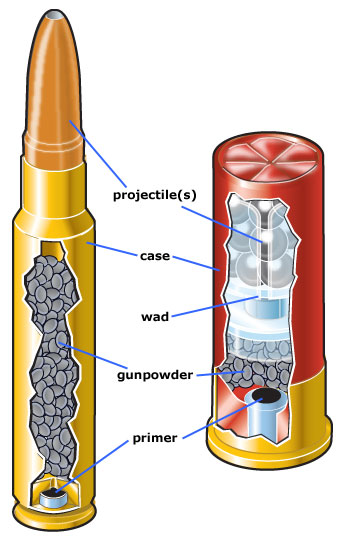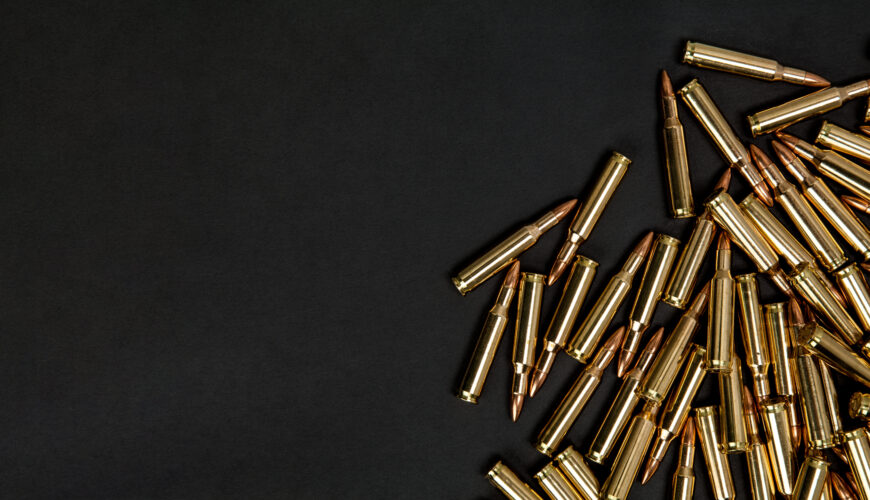Tactics
Sporting Clays Technique: How To Deal With Teal
November 24, 2025 •Mark Chesnut
February 15, 2025
Whether your interest is hunting, competitive shooting, self-defense, or simply target shooting, it’s important to understand what types of bullets are best for the job and how their relationship to the entire cartridge affects the downrange performance of a particular round when you squeeze the trigger. While some may wonder what the parts of a bullet are, this is a beginner’s mistake — you should really be asking what the parts of a cartridge are. For that reason, understanding all of a cartridge’s components — not just the bullet — is the first step in grasping the basics of firearm ballistics.
Every shot you take relies on the intricate components of a cartridge or shotshell working in perfect harmony with your rifle, handgun, or shotgun. Let’s break down the essential parts that make up ammunition and how it functions.
A cartridge, fired from a rifle or handgun, consists of four primary components: the case, primer, powder and projectile. Each plays a crucial role in the firing process.
 Case
CaseThe case, often made of brass, steel, or aluminum, holds all the other components together. It expands under pressure when fired, sealing the chamber to ensure all the energy from the burning powder propels the bullet forward. After firing, bolt-action and semi-automatic rifles eject the spent case, while revolvers require manual extraction.
The primer is a small, sensitive explosive compound located at the base of the case. When the trigger of a loaded gun is pulled, it releases the firing pin, striking and igniting the primer and sending a flame into the gunpowder, starting the combustion process. There are two types of primers: centerfire and rimfire. As the name implies, the primer is located in the center of the cartridge base in centerfire ammunition, while the priming compound for rimfire ammunition is mixed into the rim of the cartridge base.
The powder, also known as the propellant, is a chemical compound that rapidly burns when ignited. This burning process generates high-pressure gas that forces the bullet down the barrel and out of the muzzle. The type and amount of powder influence the bullet’s velocity and performance, making the powder used in a cartridge critical to the load’s overall performance in different types of hunting and shooting.
The projectile, or bullet, is the part that exits the muzzle and strikes the target. Because it is the business end of the overall cartridge and plays a huge roll in the performance of the load, a lot of people often mistakenly call cartridges bullets. But this is wrong. The bullet is simply one part of the cartridge. Bullets come in various shapes, sizes, and materials depending on their intended use. Common types include full metal jacket (FMJ) bullets for target shooting and hollow points or soft points for hunting, which expand on impact for greater stopping power.
For shotgun hunters, the ammunition used is called a shotshell. The basic operation of a shotshell is the same as a cartridge in that the shooter pulls the trigger, the firing pin strikes the primer on the shotshell, and the ignited primer sends flame into the powder. But here is where things get a little different. Instead of a single bullet, a shotshell typically contains multiple pellets, known as shot, or a single large projectile called a slug.
A shotshell has a unique extra component called a wad, which separates the powder from the shot. The wad serves multiple purposes:
Wads can be made of plastic or fiber and are crucial for achieving accuracy and effectiveness in shotgun hunting or shooting.
Understanding how cartridges and shotshells function helps hunters select the best ammunition for their needs, whether it’s choosing a soft-point bullet for deer hunting or selecting the right shotshell for waterfowl. It also enhances firearm safety, ensuring proper handling, storage, and performance.
Next time you load up for a hunt, take a moment to appreciate the precision engineering behind every round. The more you know about the parts of a bullet, the better prepared you’ll be for success in the field.
